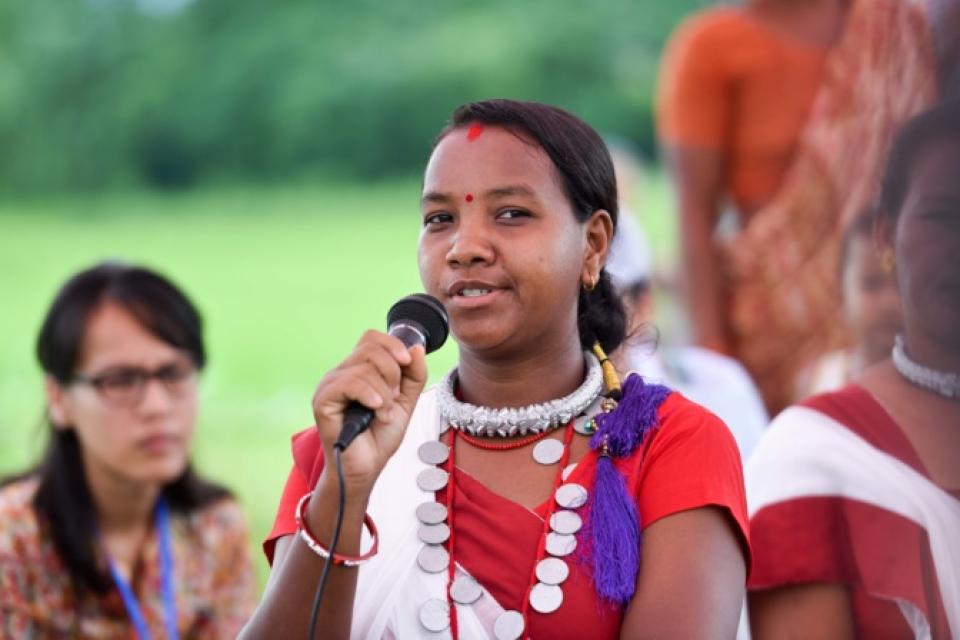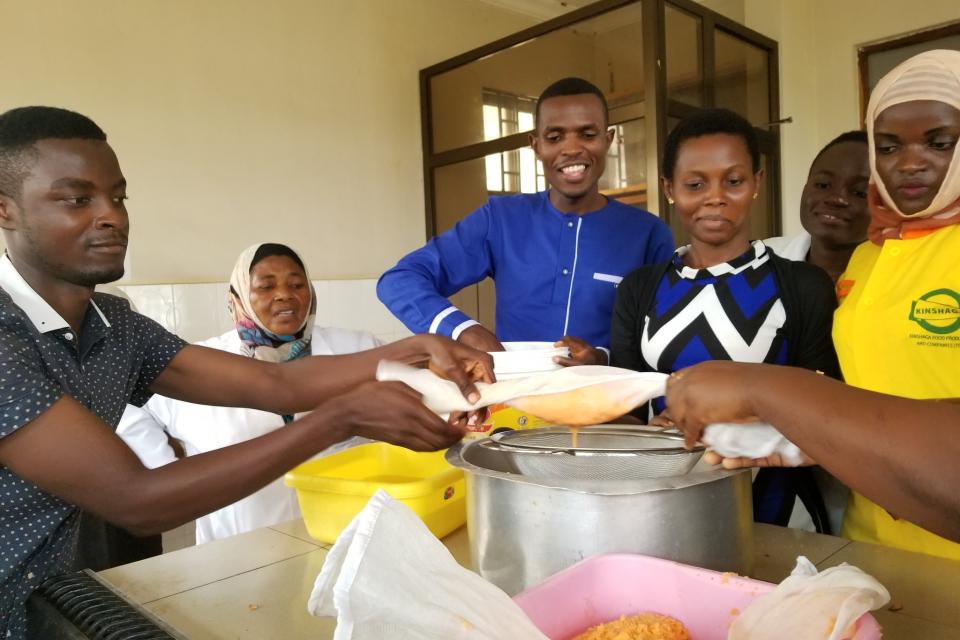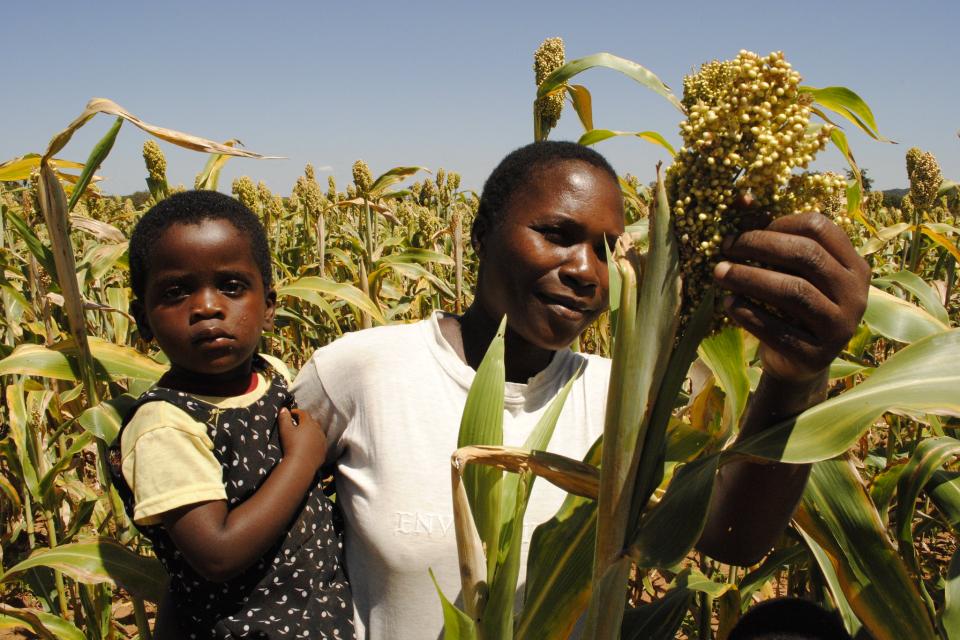CGIAR GENDER Impact Platform launched at GENDER Science Exchange
 Photo: Nathan Ronoh/CIP-GENDER.
Photo: Nathan Ronoh/CIP-GENDER.
Headlining the CGIAR GENDER Science Exchange this week (October 12-14) was the relaunch of the GENDER Platform as a CGIAR Impact Platform, which expands the platform’s mandate beyond gender to include youth and social inclusion.
CGIAR Executive Managing Director Claudia Sadoff said that Gender Equality, Youth and Social Inclusion is one of five ambitious impact areas set out in the CGIAR 2030 Research and Innovation Strategy published last year, as part of the transition to One CGIAR.
“We set goals to close the gender gap in rights to economic resources, access to ownership, and control over land and natural resources for over 500 million women who work in food, land and water systems,” she said.
The GENDER Science Exchange is being hosted by the International Livestock Research Institute (ILRI) in Nairobi, Kenya. Director General of ILRI Jimmy Smith said ILRI had long understood the importance of gender in livestock research.
“Some two-thirds of the developing world’s hundreds of millions of poor livestock keepers are women,” he explained.
Women benefit from livestock by having access to more diverse food sources, as well as being able to own animals independently, which is something they often cannot do with land.
“The Impact Platform will work as a global, intellectual hub for gender and social science research,” Sadoff said. “And it will build the capacity within CGIAR and advise CGIAR management.”
These two functions reflect the first half of the GENDER Impact Platform’s mandate, which also includes advising the management of CGIAR on the prioritization, design and implementation of CGIAR initiatives, and amplifying CGIAR’s external profile and voice on gender equality, youth and social inclusion.
Gender and social science researchers at the meeting were prompted by CGIAR GENDER Impact Platform Director Nicoline de Haan to keep thinking big to achieve impact, to continue working with colleagues across CGIAR and its initiatives to develop solutions and to collaborate to identify entry points and keep learning.
Finally, de Haan encouraged CGIAR researchers to rise to the dual challenges of creating more impact and finding solutions:
“My father would always say, ‘Oh, you’re a sociologist, you’re always telling us what we are doing wrong’. So, I always had in the back of my mind, can we find solutions,” she explained. “We have a lot of analysis now, but what are the solutions? How can we move forward to that empowerment that is actually changing lives?”
The opportunity for gender and social researchers to meet face-to-face again post-COVID was welcomed by the fourth speaker at the launch, Marlène Elias, lead of the platform’s Alliances module.
She said the event would “not only nourish ourselves intellectually and improve our research, but will provide the emotional and moral support that we need to do the difficult job we do.”
Elias welcomed CGIAR researchers to a deliberately internally focused event that would provide a safe place “to discuss cutting-edge gender, social science and food systems research, to build our capacity to strengthen ties and collaborations among CGIAR gender researchers, and to enhance the quality and impact of CGIAR research on gender equality, youth and social inclusion.”
In her opening address, Sadoff said gender research is a top priority for CGIAR, along with the need to offer rewarding opportunities to 267 million young people who are currently not in employment, education or training.
Young agripreneurs shared successes and challenges
As part of the opening session of the GENDER Science Exchange, a panel of young Kenyan agricultural entrepreneurs joined discussions to stimulate researchers to consider the issues faced by young and marginalized people in agriculture.
The first two panelists spoke about their own early negative images of agriculture. Wangari Kuria, Chief Executive Officer of Farmer on Fire, said her plan was not to be a farmer.
“I watched my mum farm, but money never changed hands because she was a subsistence farmer. I never saw it as a career,” she said.
Alphaxrd Gitau Ndunga, founder and director of Alpham Fresh Limited, reflected on being punished with farming activities as a child.
“It’s a common story,” he said. “Farming is known to be for the ones who have failed in life.”
Despite those negative associations, when Ndunga finished his studies at the University of Nairobi, he decided to enter the dairy sector. He started with one cow and now has 40 and a thriving business.
He concluded, “agriculture doesn’t need to be cool or sexy to attract youth. It just needs to be profitable.”
After being retrenched from being a real estate project manager, Kuria consulted her mother and started growing food for her family in the city. Then she began to share video clips with her interested friends, which led the birth of her YouTube channel, Farmer on Fire.
Farmer on Fires shares an update with her more than 7,000 subscribers on Youtube.
Social media is also how Nyambura Simiyu shares how she grows and cooks her own food as a mother living in the city. Simiyu refers to herself as a gardener and is especially concerned about food surplus and waste.
As a solution, she said, “I looked at traditional methods I could use with my farmer groups, and we started processing food into either sauces or jams.”
“We use fermentation, we use sun drying and we use freezing as methods of tackling food waste.”
Almost 12,000 people follow Nyambura Simiyu's updates on her garden via Youtube.
Agripreneur Janette C. Toroitich is also concerned about food waste and quoted some statistics:
“800 million people in the world are food insecure. Forty percent of all the food produced goes to waste. Right now, 23 counties in this country are hungry. And when I walk to the markets there are piles of food in the landfills.”
“Food waste is at the junction of world hunger, climate action and social justice issues.”
Toroitich, like the others in the panel, is also concerned about the aging face of African agriculture and the lack of engagement of young people through social media.
“If you look at all the agricultural publications, and I have received so many of them, and even if you look at the websites of most agricultural partners, the face of agriculture is not young,” she said.
The solution, Toroitich believes, lies in engaging young people on social media with images that would prompt them to engage across the whole agricultural value chain, including transport and food waste.
This brought the opening session of the GENDER Science Exchange neatly back to where it started: the urgent need for impact and real-life solutions as part of the new CGIAR Impact Platform pursuing gender equality, opportunities for youth and social inclusion.
Watch the relaunch of the CGIAR GENDER Impact Platform, but note that the recording starts 20 minutes into the event due to technical difficulties.


